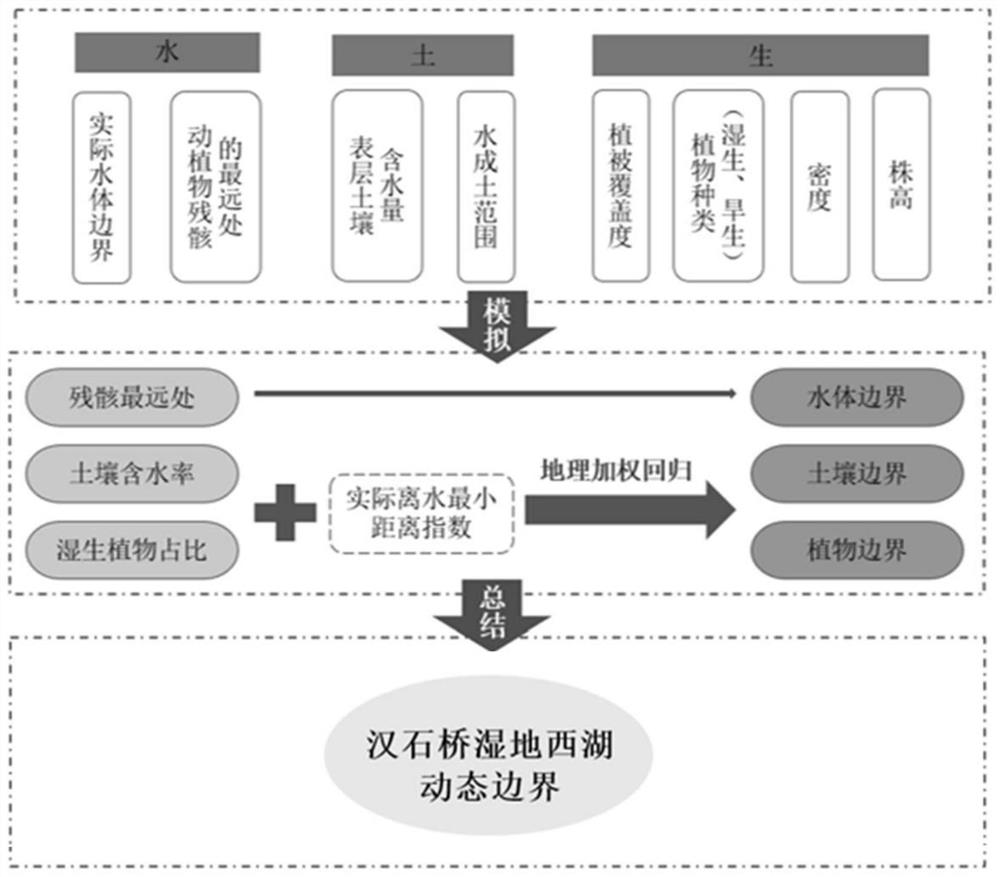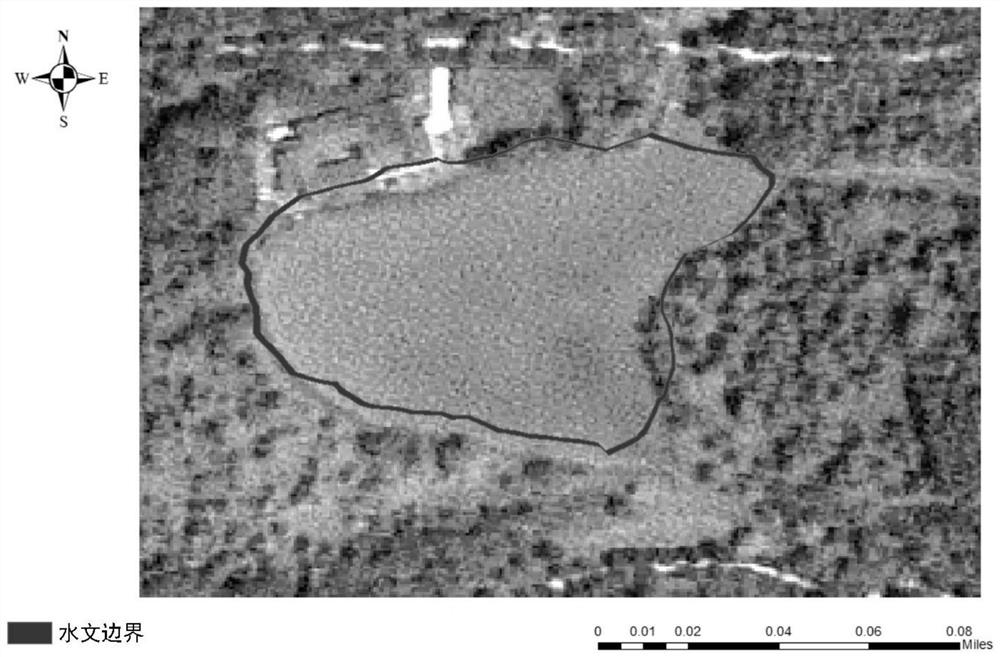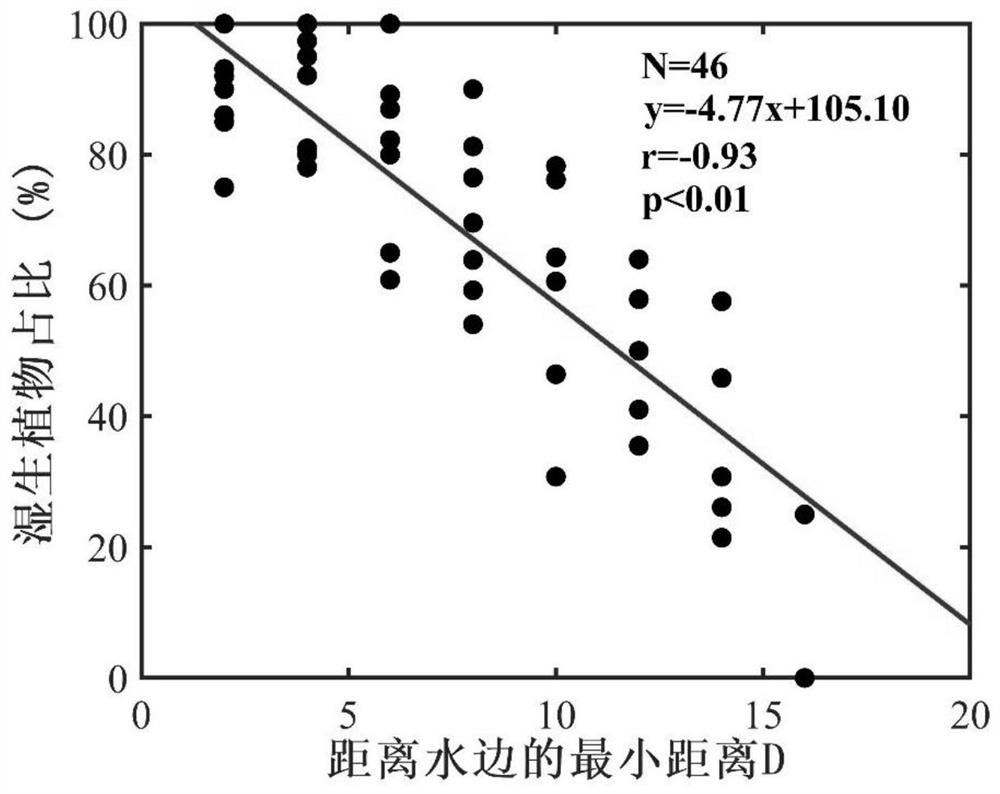Wetland dynamic boundary determination method based on three elements of hydrology, plants, and soils
A determination method and three-element technology, applied in the field of wetland dynamic boundary determination based on the three elements of aquatic soil, can solve problems such as insufficient applicability, uncertainty, and complex parameters, and achieve a wide range of applications, convenient and simple data acquisition, and accuracy. high effect
- Summary
- Abstract
- Description
- Claims
- Application Information
AI Technical Summary
Problems solved by technology
Method used
Image
Examples
Embodiment 1
[0043] Example 1: Determining the wetland dynamic boundary of West Lake in Hanshiqiao Wetland, Shunyi District, Beijing;
[0044] Such as figure 1 As shown, the method for determining the wetland dynamic boundary based on the three elements of aquatic soil in the present invention is carried out according to the following steps:
[0045] Step 1: Extraction of wetland hydrological dynamic boundary
[0046] Such as figure 2 As shown, there are two types of boundaries, including the actual water surface boundary and the boundary of animal and plant debris. The actual water surface boundary is obtained by using high-precision handheld GPS field surveys, or obtained through remote sensing images with a resolution below 2m. Accurate hand-held GPS tracking records the location of animal and plant debris, the boundary of animal and plant debris is the farthest hydrological boundary, and the wetland hydrodynamic boundary is obtained by superimposing the actual water surface boundary...
PUM
 Login to View More
Login to View More Abstract
Description
Claims
Application Information
 Login to View More
Login to View More - R&D
- Intellectual Property
- Life Sciences
- Materials
- Tech Scout
- Unparalleled Data Quality
- Higher Quality Content
- 60% Fewer Hallucinations
Browse by: Latest US Patents, China's latest patents, Technical Efficacy Thesaurus, Application Domain, Technology Topic, Popular Technical Reports.
© 2025 PatSnap. All rights reserved.Legal|Privacy policy|Modern Slavery Act Transparency Statement|Sitemap|About US| Contact US: help@patsnap.com



